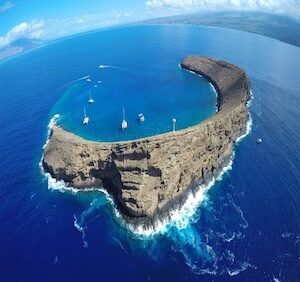Is Maui Good for Scuba Diving?

You are planning your next vacation, and your family has chosen the Hawaiian island of Maui. You’ve decided to spend a day scuba diving, but you are wondering whether Maui is a good destination for this activity. While reading a blog on a Maui dive company’s website, you recognize that it may present a biased perspective. Nevertheless, I can explain why Maui is exceptional for scuba diving.
There are numerous places worldwide where you can go scuba diving, and the variety of dive sites available can be overwhelming. It’s fascinating that coral reefs cover less than one percent of the Earth’s ocean floor. If you were to show me photos from different dive sites around the globe, I might struggle to distinguish between Thailand and the Caribbean. However, I could easily recognize Hawaii’s distinctive coral reef ecosystem in any image. The coral formations around the Hawaiian Islands are so unique that even a seasoned diver could pick them out. Additionally, 20 percent of the reef fish found in Hawaii are species that exist nowhere else in the world.
Maui’s Abundance of Scuba Diving Options
One of the significant aspects of scuba diving in Maui is the variety of dive sites available, both from shore and by boat. The Big Island is renowned for its manta ray night dives, Oahu is known for its wreck dives, and Kauai offers easy access to offshore sites like Niihau. Maui combines all of these exciting diving opportunities! With abundant options for diving and snorkeling near Maui, Lanaʻi, Molokini Crater, and Molokai, the distribution of dive companies helps reduce congestion at even the most popular sites.

View of Maui’s famous Molokini Crater dive site.
Molokini Crater
Maui’s most renowned dive site is Molokini Crater. This underwater volcano is the remains of an eruption that possibly occurred around 230,000 years ago. The crescent-shaped atoll features a shallow bay and a steep back wall that reaches 360 feet deep. Novice divers can enjoy swimming with large schools of fish in the shallow waters of the crater.
For more experienced divers, the backside of Molokini offers drift diving opportunities. You can encounter large schools of Yellow Tangs, Moorish Idols, Hawaiian Triggerfish, and Bluefin Trevally within the inner reef. Along the 200-foot back wall, keep an eye out for reef sharks, moray eels, and octopuses.
Before the COVID-19 pandemic, Molokini was a popular destination with heavy daily visitation. The increased visitor traffic, partly due to human interaction with the delicate marine environment, led to declining fish populations and damaging the fragile coral reef. To help mitigate this impact, consider supporting small tour operators.
